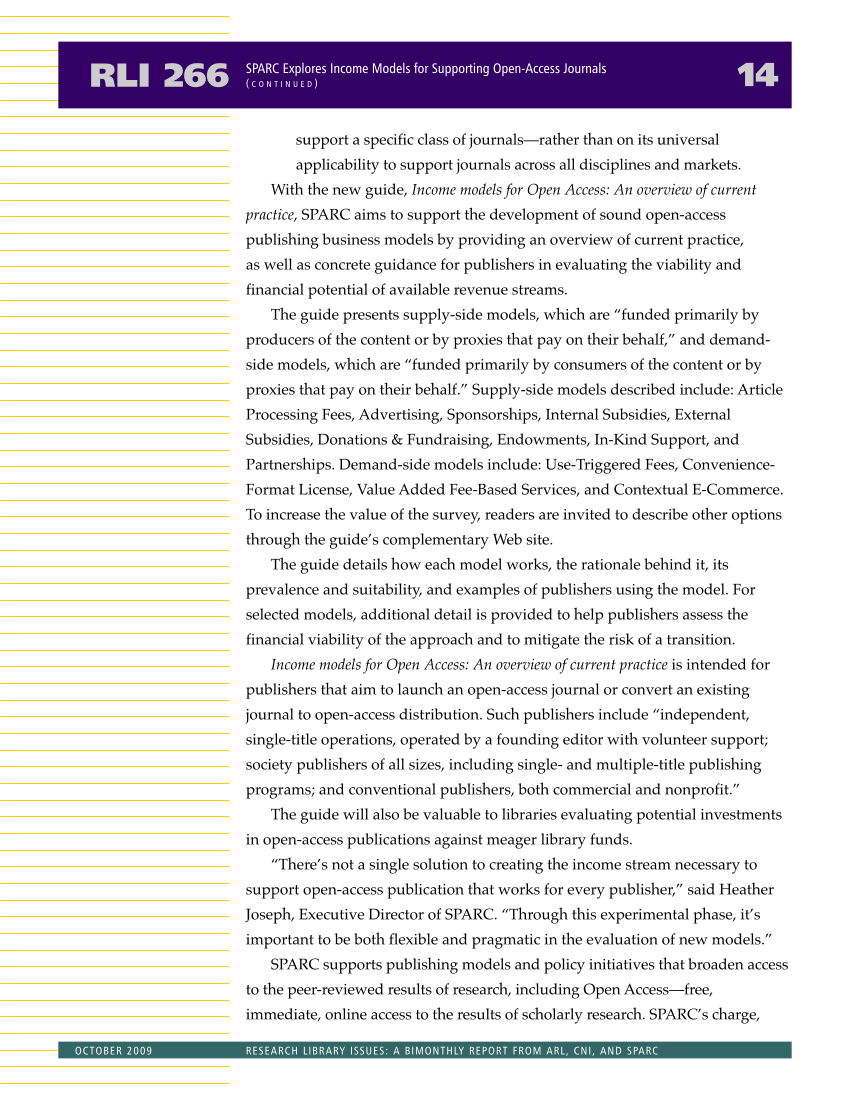RLI 266 14 SPARC Explores Income Models for Supporting Open-Access Journals ( C O N T I N U E D ) OCTOBER 2009 RESEARCH LIBRARY ISSUES: A BIMONTHLY REPORT FROM ARL, CNI, AND SPARC support a specific class of journals—rather than on its universal applicability to support journals across all disciplines and markets. With the new guide, Income models for Open Access: An overview of current practice, SPARC aims to support the development of sound open-access publishing business models by providing an overview of current practice, as well as concrete guidance for publishers in evaluating the viability and financial potential of available revenue streams. The guide presents supply-side models, which are “funded primarily by producers of the content or by proxies that pay on their behalf,” and demand- side models, which are “funded primarily by consumers of the content or by proxies that pay on their behalf.” Supply-side models described include: Article Processing Fees, Advertising, Sponsorships, Internal Subsidies, External Subsidies, Donations & Fundraising, Endowments, In-Kind Support, and Partnerships. Demand-side models include: Use-Triggered Fees, Convenience- Format License, Value Added Fee-Based Services, and Contextual E-Commerce. To increase the value of the survey, readers are invited to describe other options through the guide’s complementary Web site. The guide details how each model works, the rationale behind it, its prevalence and suitability, and examples of publishers using the model. For selected models, additional detail is provided to help publishers assess the financial viability of the approach and to mitigate the risk of a transition. Income models for Open Access: An overview of current practice is intended for publishers that aim to launch an open-access journal or convert an existing journal to open-access distribution. Such publishers include “independent, single-title operations, operated by a founding editor with volunteer support society publishers of all sizes, including single- and multiple-title publishing programs and conventional publishers, both commercial and nonprofit.” The guide will also be valuable to libraries evaluating potential investments in open-access publications against meager library funds. “There’s not a single solution to creating the income stream necessary to support open-access publication that works for every publisher,” said Heather Joseph, Executive Director of SPARC. “Through this experimental phase, it’s important to be both flexible and pragmatic in the evaluation of new models.” SPARC supports publishing models and policy initiatives that broaden access to the peer-reviewed results of research, including Open Access—free, immediate, online access to the results of scholarly research. SPARC’s charge,



























